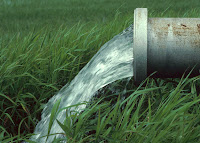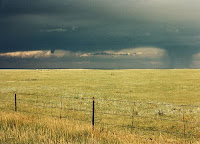I have been monitoring the activity of elements of the very broadly cast Water Information Coordination Program (WICP) - originally established in the 1960's. With a simple memorandum in 1991 (Memorandum 92-01) OMB reconstituted this unit and updated its authority. Some of it's new objectives are:
To plan, design, and operate a cost effective national network for water-data collection and analysis that meets the priority water-information needs of the Federal government and, to the extent possible within available resources, the needs of the non-Federal community that are tied to national interests.
To coordinate funding, staffing, and the provision of other resources needed to support interagency water-information activities for ensuring the best use of available resources.
To collaborate, as appropriate, with other groups that are coordinating related categories of information, such as spatial data and meteorological information.
Great, all non-federal entities are to provide their data so that the feds can turn around and provide it back to them and others - only if there are available resources to do so and only if those uses are tied to national interests. Sounds fair to me. But wait, the effort gets better.
Within WICP, there has been formed an Advisory Committee on Water Information (ACWI) made up of federal, regional, state, local, industrial, academic and water-related association representatives who are to meet the objectives and requirements of Office of Management and Budget (OMB) Memorandum No. M-92-01 (directing ACWI to establish more effective working relationships and foster collaboration with State and local agencies, Indian Tribes, and the private sector) and to, again, provide advice and consultation toward a cost-effective national network of water-data collection and analysis that meets the priority water-information needs of the Federal Government and, to the extent possible within available resources, the needs of the non-Federal community that are tied to national interests.
ACWI is supposed to have members (not to exceed 35) made up of Federal agencies; Professional water-related associations; State and county water-related associations; Academia, Private industry; Water utility associations; Civil engineering societies; Watershed and land conservation associations; Ecological societies; Lake, coastal and ocean associations; and Environmental and educational groups.
The actual member organizations of ACWI today are: National Ocean Service (NOAA); National Weather Service (NOAA); Tennessee Valley Authority; US Army Corps of Engineers; NRCS (USDA); US Forest Service (USDA); Bureau of Land Mgt (DOI); Bureau of Reclamation (DOI); National Park Service (DOI); Office of Surface Mining (DOI); US Fish & Wildlife Service (DOI); USGS Water Resources (DOI); Office of Environmental Information (USEPA); Office of Water (USEPA); Assoc of State Geologists; Assoc of Metropolitan Water Agencies; Assoc of State Drinking Water Administrators; Assoc of State and Interstate Water Pollution Control Administrators; Interstate Council on Water Policy; National Assoc of Clean Water Agencies; National Assoc of County Planners; Western States Water Council; American Society of Civil Engineers; Electric Power Research Institute; National Council for Air and Stream Improvement, Inc.; Universities Council on Water Resources; American Water Resources Assoc; American Water Works Assoc; Ecological Society of America; Groundwater Protection Council; League of Women Voters; National Ground Water Assoc; North American Lake Management Society; and the Water Environment Federation.
This list comprises 14 Federal organizations; 8 Regional, state and local organizations; 3 Industry organizations; 1 academic organization; and 8 professional association organizations. I guess this could work for a "federal first" product.
Within ACWI there are 8 subcommittees - Groundwater; Sustainability; Hydrology; Sedimentation; Monitoring; NAWQA Liason; Spatial Water Data; and Methods. And within each subcommittee there are one or more work groups - the Groundwater subcommittee for example has 4 work groups. Whew!
From where I sit, this looks like a massive federal effort to infuse most of the federal agencies into every nook and cranny and aspect of water data, policy and management. I'd almost be receptive of a water data role for our federal brothers, but I get real nervous when they start talking about sustainable water management as a federal policy. We'll keep watching.
 The international "right to water" was more or less formalized in the UN Committee on Economic, Social and Cultural Rights back in 2002 when General Comment No. 15 was adopted. It was a generalized statement at that time, but in the intervening years it has begun to catch on and today certain political and social efforts are beginning to focus on realizing this ideal - at least in some specific contexts and places. While some celebrate these fledgling efforts as ensuring fair access to basic resources, others question the means and direction of the concept altogether.
The international "right to water" was more or less formalized in the UN Committee on Economic, Social and Cultural Rights back in 2002 when General Comment No. 15 was adopted. It was a generalized statement at that time, but in the intervening years it has begun to catch on and today certain political and social efforts are beginning to focus on realizing this ideal - at least in some specific contexts and places. While some celebrate these fledgling efforts as ensuring fair access to basic resources, others question the means and direction of the concept altogether.























